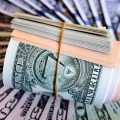Forex is a very big and detailed concept that takes some time to get accustomed to and understand. There is so much to learn and get your head around that some of the terms and ideas can seem incredibly complicated.
However, whether you’re just starting out, looking at Tradingview charts, or deciding what your next trade should be, here are a few terms and concepts that you should know the meaning of.

Currency pair
In forex, you don’t trade individual currencies. Instead, you trade pairs of currencies. In essence, forex trading is trading one currency depending on its performance against the one it’s paired with.
Therefore, if you buy into the USD/EURO pair, you’re hoping for the USD to strengthen against the EURO or the EURO to strengthen against the USD. Trading pairs also mean you have to buy into the pair using one of the currencies: you can’t buy into the YEN/EURO pair with USD.
Exotic pairs
There are 180 recognized currencies in the world, and therefore there are numerous trading pairs to choose from. However, pairs that fall out of the top 10 in the world are referred to as exotic pairs, and the best ones often come from emerging markets.
Exotic pairs include currencies such as the South African rand or the Turkish lira.
Decode Global mentioned that they aren’t as strong as the USD or GBP, but they are growing and becoming stronger by the day.

Leverage
Profit in forex is usually very small, maybe only a percent or two. To turn this small profit into something worthwhile, many traders use leverage. Leverage is offered by the platform you trade on and can be used to increase your investment amount, which then maximizes profits.
If you have $10 and your platform offers 20x leverage, your $10 is now worth $200. A 1% or 2% profit on $10 is far less than on $200. Considering how small forex profits can be, being able to get more for less is a brilliant option to have.
Bid/ask price
When trading forex, you will see the terms “bid price” and “ask price.” They are fairly simple to understand as the bid price is the price the trader is willing to sell the pair for, and the ask price is what the trader will buy a pair for. The difference between these two prices is what is known as the spread.
The spread is calculated by subtracting the bid price from the asking price; for example, if you’re trading a pair that is sitting at 1.0100/1.0105, the spread is 1.0105 – 1.0100, or 0.0005.
Pip
A pip, or percentage in points, is the 4th decimal on a price quote. If the price is 0.0136, the pip is 6. Pips are used to determine the value of the currency and whether or not it’s increasing or decreasing.
For example, if you are trading USD/GBP, and the value is at 0.0600, this means $1 will get you about 0.0600 GBP. If the GBP rises to 0.0610, you will now be able to get slightly more GBP for your $1: the pip went up.
Going long/short
Going long or short are terms you’ve probably heard before if you’ve bought and sold stocks or cryptocurrencies. In simple terms, going long is buying when you expect the price to rise, and going short is selling as you expect the price to decrease.
Scalp trading
Forex allows for different types of trading strategies, namely scalping, day trading, position trading, and swing trading. Scalp trading is when you make numerous small trades, cashing in on the slight pip changes. Profits are small, but they add up when done enough times.
Day Trading
Day trading is self-explanatory. Traders will buy into their position in the morning and then sell again later on in the day. Profits are bigger per trade compared with scalping, but you do fewer of them in the day.
Position trading
Position trading is far more long term than day trading, and sees buyers holding their position for a few weeks, months, or even years. This strategy is used for all currencies, but is particularly good for emerging markets. You can think of it as the difference between someone who bought Facebook stock early compared with someone who got in a few years later: long-term, exponential growth is the goal.

Swing trading
Swing trading is a mix of long- and short-term trading and uses trends or significant price fluctuations to cash in. While you don’t need to put in as much time as a day or scalp trader, you still need to be aware of market moves and changes that can instantly affect price.






